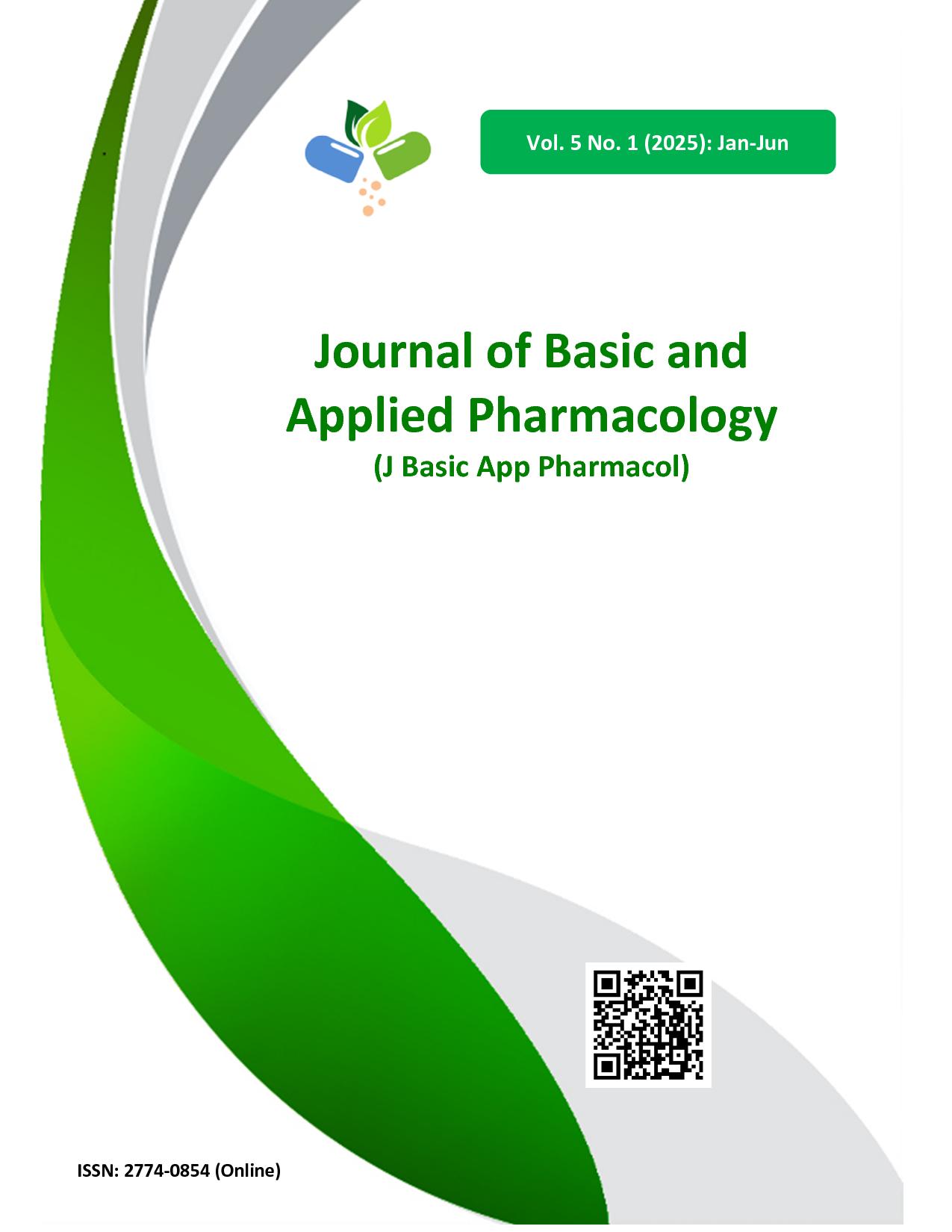Aquilaria crassna Leaf Extract Improves Memory Deficits in Ovariectomized Rats
Main Article Content
Abstract
Aquilaria crassna is one Aquilaria species which can produce agarwood. Most agarwood is processed into oil which is used in perfumes and in the production of traditional medicines for treating asthma, stress, and other diseases. This study aimed to investigate the effect of A. crassna leaf extract on learning and memory of ovariectomized rats, an animal model of Alzheimer’s disease (AD). Sprague Dawley rats were subjected to bilateral ovariectomy (OVX). Following a full recovery, A. crassna leaf extracts (10, 100, 1000 mg/kg B.W.) were orally administered for 60 days. The negative control group received RO water and the positive control group received donepezil. Novel object recognition (NOR) and Morris water maze (MWM) tests were employed to evaluate their cognitive functions. The activities of acetylcholinesterase (AChE), superoxide dismutase (SOD), and catalase (CAT), as well as the levels of malondialdehyde (MDA) in the hippocampus, were assessed. OVX rats receiving A. crassna leaf extract showed a significant improvement in both object recognition and spatial memories when compared to the OVX control group. Additionally, treatment of A. crassna leaf extract resulted in significant elevation in the activities of SOD and CAT, suppression of AChE activity, and reduction in MDA levels compared to the OVX group. A. crassna leaf extract could improve cognitive and memory impairment in OVX rats by increasing antioxidant activity and inhibiting acetylcholinesterase. Therefore, A. crassna leaf extract may be useful in reducing the risk of AD in postmenopausal women.
Article Details

This work is licensed under a Creative Commons Attribution-NonCommercial-NoDerivatives 4.0 International License.
Upon acceptance of an article, the Pharmacological and Therapeutic Society of Thailand will have exclusive right to publish and distribute the article in all forms and media and grant rights to others. Authors have rights to use and share their own published articles.
References
Armstrong R. What causes Alzheimer’s disease? Folia Neuropathol. 2013;51(3):169-188.
Ferreira-Vieira TH, Guimaraes IM, Silva FR, Ribeiro FM. Alzheimer’s disease: targeting the cholinergic system. Curr Neuropharmacol. 2016;14(1):101-115.
Matyi JM, Rattinger GB, Schwartz S, Buhusi M, Tschanz JT. Lifetime estrogen exposure and cognition in late life: the Cache County Study. Menopause. 2019;26(12):1366-1374.
Yun J, Yeo IJ, Hwang CJ, Choi D-Y, Im H-S, Kim JY, et al. Estrogen deficiency exacerbates Aβ-induced memory impairment through enhancement of neuroinflammation, amyloidogenesis and NF-ĸB activation in ovariectomized mice. Brain Behav Immun. 2018;73:282-293.
Murphy KE, Park JJ. Can co-activation of Nrf2 and neurotrophic signaling pathway slow Alzheimer’s disease? Int J Mol Sci. 2017;18(6):1168.
Takuma K, Matsuo A, Himeno Y, Hoshina Y, Ohno Y, Funatsu Y, et al. 17beta-estradiol attenuates hippocampal neuronal loss and cognitive dysfunction induced by chronic restraint stress in ovariectomized rats. Neuroscience. 2007;146(1):60-68.
Meng Y, Wang R, Yang F, Ji ZJ, Fang L, Sheng SL. Amyloid precursor protein 17-mer peptide ameliorates hippocampal neurodegeneration in ovariectomized rats. Neurosci Lett. 2010;468(3):173-177.
Sozio P, Cerasa LS, Marinelli L, Di Stefano A. Transdermal donepezil on the treatment of Alzheimer’s disease. Neuropsychiatr Dis Treat. 2012;8:361-368.
Colović MB, Krstić DZ, Lazarević-Pašti TD, Bondžić AM, Vasić VM. Acetylcholinesterase inhibitors: pharmacology and toxicology. Curr Neuropharmacol. 2013;11(3):315-335.
Bahrani H, Mohamad J, Paydar MJ, Rothan HA. Isolation and characterisation of acetylcho-linesterase inhibitors from Aquilaria subintegra for the treatment of Alzheimer’s disease (AD). Curr Alzheimer Res. 2014;11(2):206-214.
Blokhina O, Virolainen E, Fagerstedt KV. Antioxidants, oxidative damage and oxygen deprivation stress: a review. Ann Bot. 2003;91 Spec No(2):179-194.
Zhang X, Wang J, Xing Y, Gong L, Li H, Wu Z, et al. Effects of ginsenoside Rg1 or 17β-estradiol on a cognitively impaired, ovariectomized rat model of Alzheimer's disease. Neuroscience. 2012;220:191-200.
Khodamoradi M, Asadi-Shekaari M, Esmaeili-Mahani S, Esmaeilpour K, Sheibani V. Effects of genistein on cognitive dysfunction and hippocampal synaptic plasticity impairment in an ovariectomized rat kainic acid model of seizure. Eur J Pharmacol. 2016;786:1-9.
Wongwad E, Pingyod C, Saesong T, Waranuch W, Wisuitiprot W, Sritularak B, et al. Assessment of the bioactive components, antioxidant, antiglycation and anti-inflammatory properties of Aquilaria crassna Pierre ex Lecomte leaves. Ind. Crops Prod. 2019;138: 111448.
Ellman GL, Courtney KD, Andres V Jr, Feather-stone RM. A new and rapid colorimetric determination of acetylcholinesterase activity. Biochem Pharmacol. 1961;7:88-95.
Tsikas D. Assessment of lipid peroxidation by measuring malondialdehyde (MDA) and relatives in biological samples: Analytical and biological challenges. Anal Biochem. 2017;524:13-30.
Bahrani H, Mohamad J, Paydar MJ, Rothan HA. Isolation and characterisation of acetylcholinesterase inhibitors from Aquilaria subintegra for the treatment of Alzheimer's disease (AD). Curr Alzheimer Res. 2014; 11(2):206-214.
Okugawa H, Ueda R, Matsumoto K, Kawanishi K, Kato A. Effect of jinkoh-eremol and agarospirol from agarwood on the central nervous system in mice. Planta Med. 1996;62(1):2-6.
Pattarachotanant N, Rangsinth P, Warayanon W, Leung GP-H, Chuchawankul S, Prasansuklab A, Tencomnao T. Protective Effect of Aquilaria crassna Leaf Extract against Benzo[a]pyrene-Induced Toxicity in Neuronal Cells and Caenorhabditis elegans: Possible Active Constituent Includes Clionasterol. Nutrients. 2023; 15(18):3985.


